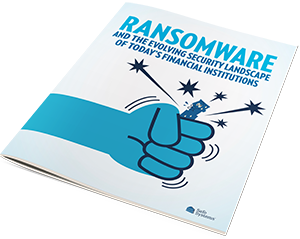Network Vulnerability: Why Scanning Your Institution’s Servers Is Not Enough

As community financial institutions continue to innovate and add to their IT infrastructure, they are unknowingly adding security threats, issues and vulnerabilities that might not be addressed by the standard security measures that are in place. Recent high profile security breaches have shown that it can take more than 100 days for an organization to detect suspicious activity on the network. To quickly identify internal threats, network security solutions must now scan and monitor more than just servers. It is vital for community banks and credit unions to scan the entire network to provide greater visibility and monitor potential threats on all workstations and devices connected to the network. Reasons for this necessity include:
- Increased Vulnerabilities
Financial institutions now have more devices and software connected to their network than ever before, driving the number of vulnerabilities upward. A single vulnerability can result in an attack on the entire network, which leads to stolen bank and customer data, a devastating effect on the organization’s revenue and reputation, and the significant costs associated with repairing the damage.
- More Cyberattacks in the Financial Services Industry
Cybercrime and threats are at an all-time high, especially in the financial services industry. According to a study by Raytheon and Websense, financial services organizations see three times as many attacks as organizations in other industries. This is because financial institutions house significant amounts of valuable, financial data such as credit and debit card information, corporate bank account numbers and other personal identification documents. Cybercrime will continue to plague financial institutions so it is important to be proactive and implement solid security defenses to secure the institution and its data.
- Strict Regulatory Expectations Around Security
Due to the increasing volume and sophistication of cyber threats, the Federal Financial Institutions Examination Council (FFIEC) developed the Cybersecurity Assessment Tool (CAT) to help institutions identify their risks and determine their cybersecurity preparedness. The CAT helps financial institutions weigh specific risks such as vulnerabilities in IT security measures versus controls or solutions aimed to prevent, detect and respond to these threats and determine areas for improvement. To remain in compliance with the FFIEC guidance, community banks and credit unions must scan their networks on a weekly basis to prevent cyber threats and demonstrate that they have the appropriate threat and vulnerability detection solutions in place.
Greater Network Visibility
 To establish a secure IT network and be better protected in the current environment, financial institutions should employ a strategy that places many uniquely tailored layers throughout their networks, from the end-user to the internet, as well as a network security solution that scans the entire network, including all devices and workstations. It is important to implement a solution that identifies unknown vulnerabilities and reduces the risk of cyber-attacks. By scanning more than just servers, financial institutions have the ability to prioritize and address the vulnerabilities identified.
To establish a secure IT network and be better protected in the current environment, financial institutions should employ a strategy that places many uniquely tailored layers throughout their networks, from the end-user to the internet, as well as a network security solution that scans the entire network, including all devices and workstations. It is important to implement a solution that identifies unknown vulnerabilities and reduces the risk of cyber-attacks. By scanning more than just servers, financial institutions have the ability to prioritize and address the vulnerabilities identified.
In an effort to help financial institutions better address network vulnerabilities, Safe Systems developed the V-Scan vulnerability scanning solution. V-Scan is a powerful network scanning tool that scans the entire network, both Windows and non-Windows-based devices and operating systems, and produces an exhaustive list of all threats that exist on each device. Safe Systems takes all the data collected and breaks it into different segments, creating a tailored report. With Safe Systems’ V-Scan solution in place, financial institutions will have greater visibility into their networks, providing confidence that the organization is truly secure.



